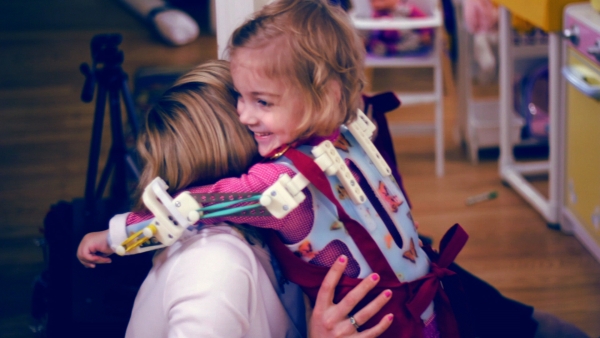Girl Who Couldn't Move Her Arms Helped By 3D Printed Exoskeleton

At the age of 2, Emma wanted to play with blocks. But this wasn't possible due to a condition called arthrogryposis, meaning she couldn't lift her arms with her own strength. Traditional hospital treatment for this has been superseded by a 3D printed exoskeleton (she calls them "magic arms"), which aids her with all her movements.
Emma has a condition called arthrogryposis: a rare congenital disorder characterized by muscle weakness, with its name deriving from a Greek term which means curved or 'hooked' joints. Without any outside assistance, whe was only able to move her thumb, and gradually learnt to walk with the help of a walker.
The researchers at Neumors/Alfred I. duPont Hospital for Children have helped with many cases such as Emma's in the past with a device called the Wilmington Robotic Exoskeleton (WREX): an arrangement of metal bars, resistance bands and hinges that act rather similar to the springs on a swing-arm lamp, to reduce the force of gravity on the arms, aiding movement. The only downside to this is it has worked for kids as young as 6 in wheelchairs, whereas Emma is 2 and was free to move without the aforementioned chair.
This is where Tariq Rahman and Whitney Sample of Neumours' pediatric engineering research lab got to work on shrinking the components of the device, making it lighter and more agile for Emma to use. Using a Stratasys 3D printing machine, they constructed a perfectly compatible version of the WREX with ABS plastic. It gives her the empowered independence to feed herself, hug her mother and play with the blocks like she always wanted.
A fascinating story of just how liberating 3D printer technology could be for the future: allowing for medical breakthroughs.
Source: PR Web (Press Release)
Jason England